Imagine telling Google, “Hey, find me the best pizza place,” and instead you get a library shown. That’s when you understand SEO might require some minor tuning-up. Your website’s way of whispering sweet nothues into Google’s ear is SEO, or search engine optimization, aiming to be the first name it remembers among an ocean of web data. It’s about being the solution people are looking for and differentiating oneself from a digital throng. Here at Plerdy, we know that SEO goes beyond traffic to include ensuring your material satisfies your audience exactly where they need it. Here is why SEO is a digital marketing game-changer and how it might turn clicks into conversations.
Understanding SEO and its Importance
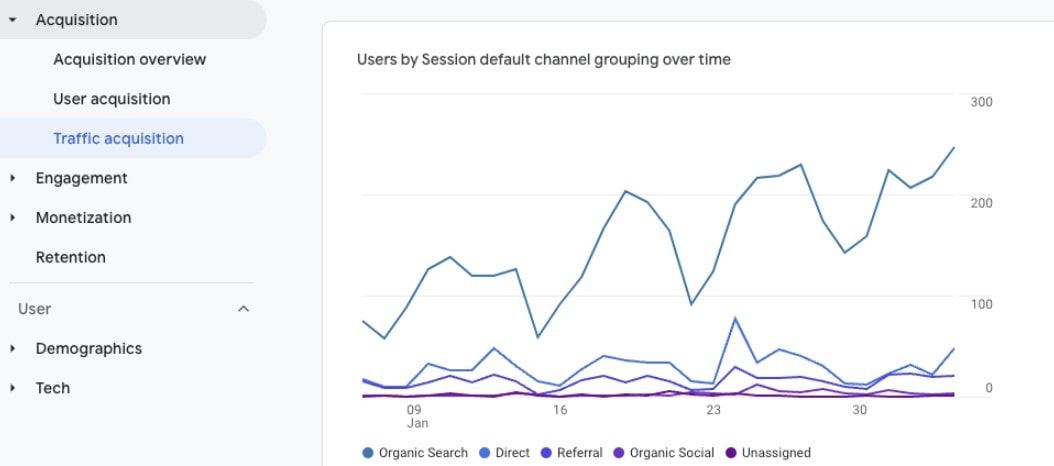
See your website as a crowded city library where every book fights for attention. The librarian guiding guests directly to your shelf is SEO. Knowing SEO and its significance is like learning the craft of being found in this huge digital terrain.
Introduction to SEO and Its Significance
SEO is the calculated method of raising the search engine results of your website. It’s not only about appearances; it’s about being discovered by the correct people at the correct moment. A key component of any digital plan since proper SEO makes your site available to individuals looking for what you have to offer.
Definition and Fundamentals of SEO
SEO increases web page ranks in search engines using numerous techniques. Understanding search engines and perfecting your material to show for pertinent searches is everything in SEO. This covers keyword research to ascertain what possible customers are looking for, content and site structure optimization to target these keywords, and site search engine friendliness development.
Search engine algorithms vary, hence SEO calls for a comprehensive knowledge. Maintaining current with SEO developments is therefore really vital. Effective SEO depends on ongoing education and adaptation since strategies that worked a few years ago might not be relevant now.
Importance of SEO in Digital Marketing
Most purchase in the digital era starts online. Any digital marketing strategy requires SEO. Not enough is traffic to your site; you must draw customers.
Search engine optimization of a website improves usability and user experience, so affecting conversion rates and sales greatly. By ranking better on SERPs, SEO improves brand recognition and hence increases consumer acquisition.
Moreover, SEO is reasonably affordable. Unlike sponsored advertising, which needs continuous money to drive visitors to your website, the natural traffic produced by SEO is quite free. Companies seeking to maximize their marketing budget should give SEO some thought since over time it can show a great return on investment.
SEO increases the visibility and accessibility of your site to people actively looking for what you provide. Your internet profile may be made or destroyed by this component of digital marketing. SEO is becoming more and more important as we negotiate the digital world and a necessary tool for every company trying to flourish online.
Consult reliable sites as Moz’s Beginner’s Guide to SEO or Search Engine Journal for more detailed understanding of SEO techniques. These resources can guide methods and SEO trends.
Core Elements of SEO
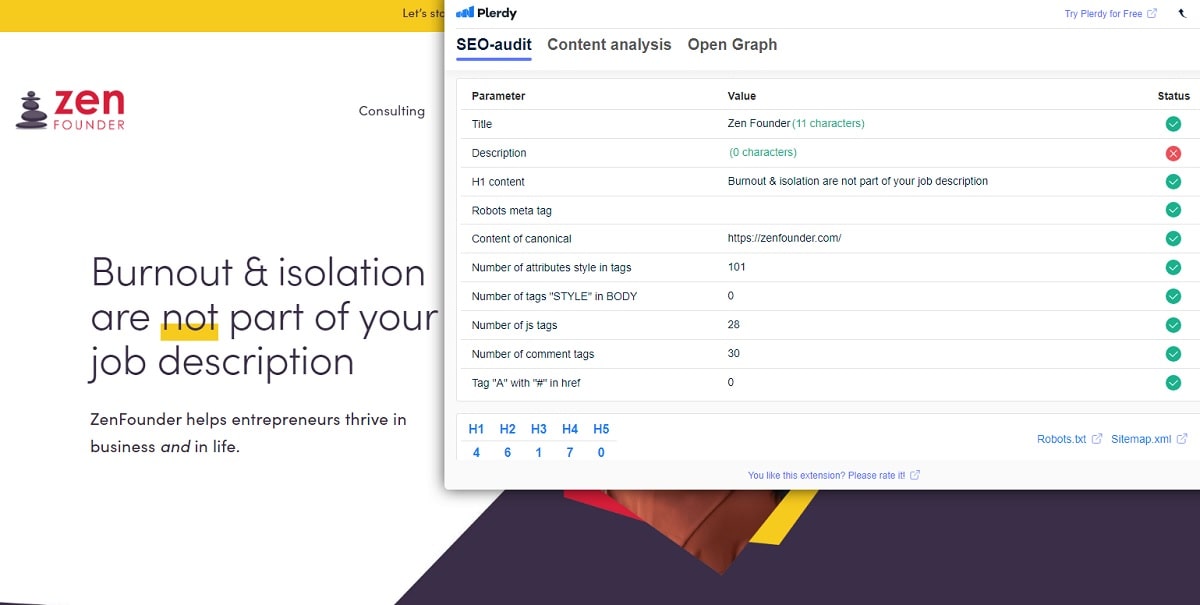
When all of a complex machine’s components harmonize, SEO performs best like that too. Knowing these fundamental components of SEO helps you to discover the secret to improve the interaction of your site with search engines and users.
Search engine optimization (SEO) is a mosaic of techniques and ideas rather than a one-time activity you do to help your site rank better. In this process, the fundamental components of SEO—on-page, off-page, and technical SEO—each are quite important.Let’s break apart these elements to see how they support the SEO ecosystem and why learning them will greatly increase the search engine performance of your site.
On-Page SEO Techniques
All the steps you may take straight inside your website to raise its rating in the search results constitute on-page SEO. This covers perfecting your HTML source code and content for your pages. Important features of on-page SEO consist in:
- Your website must offer your visitors pertinent and high-quality material that meets their demands. This includes focusing on the appropriate keywords and offering interesting, helpful, and educational material.
- Keywords: It is absolutely vital to properly use keywords—terms your target audience types into search engines. These should be organically included into headers, titles, and body language.
- Title tags and meta descriptions in SEO help to succinctly highlight page content so inspiring readers to click through from the SERP.
- URLs: StructureSEO is improved by straightforward, readable URLs including keywords.
Every component aids in search engine understanding and indexing of the material on your page. See materials like Google’s SEO Starter Guide for more thorough directions on optimizing on-page features.
Off-Page SEO Strategies
Off-page SEO is activity outside of your website meant to influence search engine results. This entails raising the popularity, significance, credibility, and power of a site. Mostly, it entails creating backlinks—links from other websites to your own. Other off-page elements consist:
- Backlinks: Still among the most important off-page SEO consideration are their quantity and quality. High-quality backlinks are considered as more pertinent and reliable at sites.
- Social media signals do not directly affect search results, but having a strong social presence will increase the reach of your material and provide extra traffic and backlinks.
- Google also takes into account implicit links—that is, references to your brand on other websites—which support the authority of your site.
Good off-page SEO can greatly raise the authority and visibility of your site. For ideas to create backlinks and boost your off-page SEO, think about referencing reputable sources such as Moz’s link-building manual.
Technical SEO Fundamentals
Technical SEO ensures a website meets current search engine criteria to raise natural ranks. Important technical aspects of SEO:
- Fast-loading websites enhance user experience and search engine results by nature.
- Google ranks content largely on mobile devices thanks to mobile optimization—that is, mobile-first indexing.
- Make your website search engine crawlers and user accessible using HTTPS, indexing, and a decent XML sitemap.
Google’s PageSpeed Insights among other tools can assist you find methods to strengthen the technological basis of your website.
Any digital marketer or site owner trying to raise their search engine results has to first understand the fundamental components of SEO. Learning on-page, off-page, and technical SEO will improve the user experience and visibility of your website, so boosting traffic and maybe higher conversion rates. Keep current on SEO techniques to guarantee that your efforts complement search engine algorithms and yield results.
Analyzing and Optimizing SEO Content
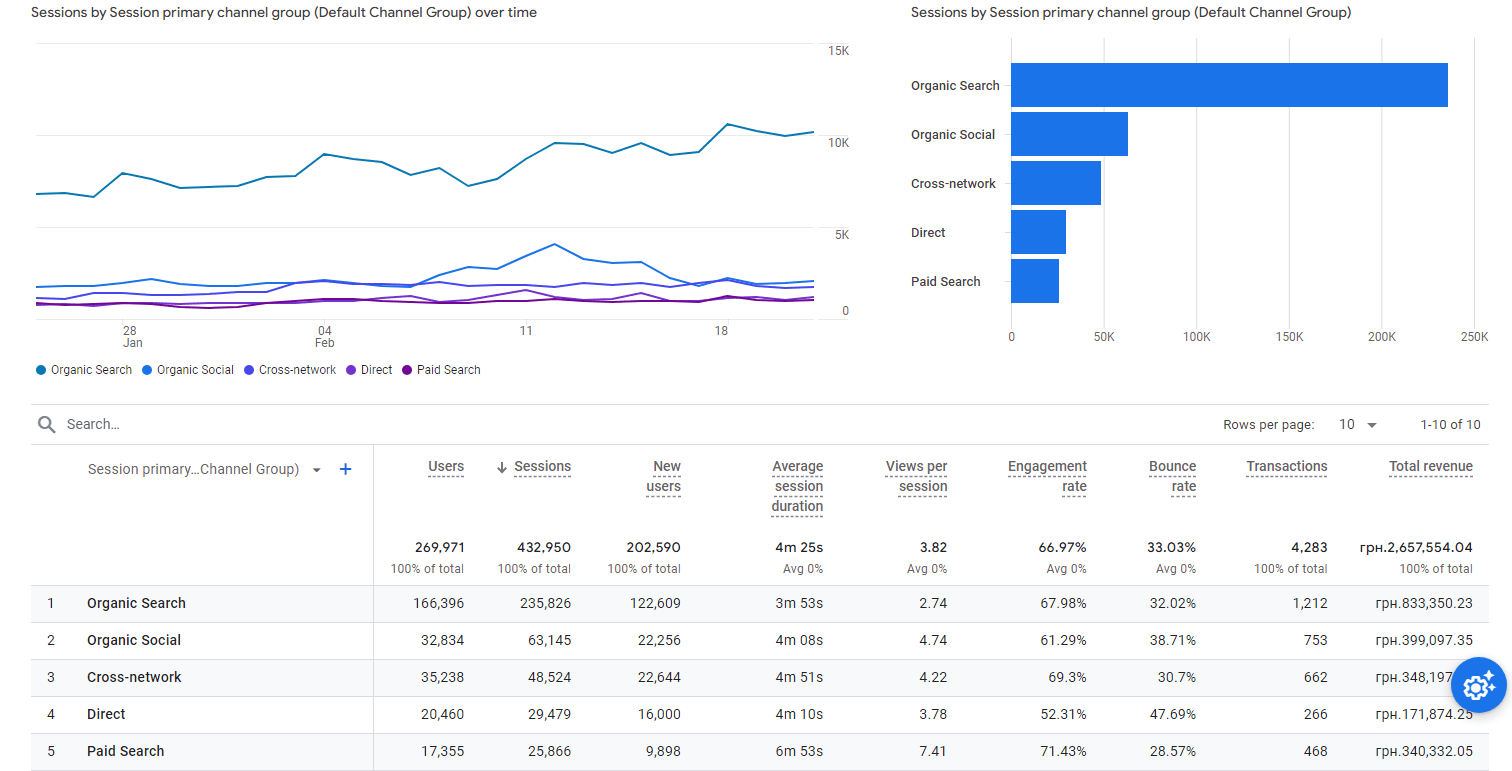
Enter the realm of SEO without content analysis and optimization is like trying to guide a ship without a compass. Both experienced and new digital marketers have to realize that good SEO is not a set-it-and-forget-it element of their digital plan; rather, it calls for ongoing examination and improvement.
In the always changing terrain of SEO, the material on your website has to not only draw visitors but also address their queries or difficulties. Improving the search engine results and user interaction of your site depends on analyzing and optimizing SEO content, hence this is really vital. Let’s look at how to evaluate current material completely and plan fresh material to maximize SEO impact.
Analyzing Existing SEO Content
Regarding SEO, knowing what you already have on your website will help you start to enhance. This entails closely reviewing your current material to find areas of strength and weakness with relation to search engine optimization.
Important components to examine:
- Optimize material for keywords without overfilling by means of keywords. Google Analytics can point up page-traffic keywords for you.
- Relevance and material Quality: Search engines and users alike value excellent, relevant material. See whether your material matches your audience’s search intent and answers their questions and wants.
- Measurements of User Engagement: Review bounce rate, average page duration, pages per session to gauge content engagement. These metrics could show whether your material meets the demands of visitors.
Systematic review helps one to update current knowledge, increase keyword density, and improve readability. Track performance and find possible problems by looking at Google’s Search Console.
Developing New SEO-Optimized Content
Developing fresh material with SEO in mind goes beyond simply covering subjects important to your readers. Strategic planning helps to guarantee that the material is search engine optimized and educational.
Procedures for Creating Perfect Content:
- Research keywords: Look for low-competition, high volume keywords.Tools such as SEMrush or Ahrefs offer information on keywords your rivals could find necessary.
- Structural Content:Arange your material to improve search engine optimization and readability. Incorporate bullet points, brief paragraphs, H1 and H2 tags. Every piece should have an unambiguous introduction, body, and ending.
- Maximize for Search Intent:Match your material to the search intent underlying the keywords. Whether transactional, navigational, or informational, the material should adequately address user questions.
New content can be scheduled with a content calendar. With constant content, your site appeals to both new and returning viewers.
Constant analysis and improvement of SEO material greatly affects the visibility and user interaction of your site. Through continuous assessment of current information and diligent development of new content, you modify your SEO strategy to reflect user behavior and search engine algorithms. Adopt these techniques to raise the search engine optimization of your website and offer worthwhile, interesting material fit for your readership. See Moz’s content strategy guide for more reading on content strategy and optimization.
Let’s keep investigating the key techniques for preserving and improving your SEO plan.
Implementing SEO Best Practices
Following SEO best practices helps you to maximize the impact of your updates and new developments following analysis of current material and strategic planning of new content.
Important Approaches consist in:
- Every page of your website should have distinct meta tags and descriptions including pertinent keywords. These components are absolutely vital since they impact the way your pages show on search engine results pages (SERRs), thereby influencing click-through rates.
- Use alt tags, HTML attributes applied in image tags, to give search engines a text alternative. Keywords help search engines enhance website visibility and analyze picture material.
- Focus on gathering premium backlinks from reliable websites. Backlinks are what search engines use to create site relevancy and authority.Guest blog, team with influencers, and create shareable material to boost your backlink profile.
- Structured data allows search engines to better SERP results by helping them to grasp the content of your site. For articles, products, or events especially, this can be quite successful since rich snippets help to enhance the SERP appearance of your pages.
Visiting SEO reference websites like Search Engine Land’s advice on SEO can be quite beneficial for more thorough direction on these techniques.
Monitoring and Adjusting Strategies
SEO calls for constant monitoring and change. Review your SEO performance indicators often to learn what is and isn’t working.
Typical responsibilities should consist of:
- Track visitors, activity, and conversions using Google Analytics. Patterns and trends can guide SEO approach.
- Examining your rivals’ SEO efforts will help you Ahrefs and other tools let you monitor their backlinks, content changes, and rankings. Knowing rivals’ tactics could help you to see your advantages and shortcomings.
- Regular SEO audits help you to identify technical flaws and improvements that might improve the user experience and position of your site. Look for broken links; make your site mobile-friendly; and quicken it.
Excellent SEO newsletters for tracking algorithm changes include Moz Top Ten and Google Webmaster Central Blog. Make use of these tools to be aware and ready for the continuous changes in SEO.
The foundation of good digital marketing plans is efficient SEO content analysis and optimization formative process. Site exposure and interaction can be raised by carefully creating fresh material, evaluating current content, and often changing SEO best practices. SEO is a trip that never ends and calls both consistency and adaptation. Keep dedicated, keep educated, and see how your website rises to new digital heights.
SEO Tools and Technologies
Negotiating the world of SEO without the necessary tools is like searching for riches without a road map. Technologies and tools for SEO help to guide and inform site optimization thereby enhancing search engine results and audience reach.
Anyone that takes digital marketing and online visibility seriously needs SEO tools and technologies. These tools provide vital information about the performance of your website, areas of improvement, and relative competitiveness with regard to others. They streamline and automate auditing and website optimization, so enabling SEO even for nontechnical users.
Important SEO Instruments
- Keyword Research Tools: Crucially, you know what your audience wants. Semrush, Ahrefs Keywords Explorer, and Google Keyword Planner expose keyword counts, competition, and trends. These instruments are quite helpful in creating a list of focused keywords that can increase pertinent visitors to your website.
- Analytical Tools: Everybody running an SEO strategy needs Google Analytics. It specifics user behavior, website traffic, and conversion rates.Understanding the efficacy of your SEO efforts and guiding your decisions on next tactics depend on this knowledge.
- Tools for SEO audits such Moz, Screaming Frog, and Google Search Console enable you to spot website problems potentially compromising your SEO performance. They search for broken links, assess site speed, examine meta tags, and provide practical advice to improve the search engine visibility and general state of your website.
Consult guides like Moz’s Beginner’s Guide to SEO for more ideas on applying these tools wisely.
How to Use SEO Tools for Competitive Analysis
To evaluate market position and find areas for development, SEO calls on competition analysis. Competent analytic tools like as SEMrush and Ahrefs reveal the terms your rivals rank for, their backlink quality, and their SEO health.
- Knowing the link profiles of your rivals might assist you create link-building plans and get understanding of their SEO approach. Ahrefs and Majestic SEO allow tools to examine the relevancy and strength of these links.
- Examining the material of your rivals will help you identify what is working for them. BuzzSummary can provide you the most shared content for your company, therefore guiding your choice of audience-friendly themes.
- Track your rivals and your own ranks. Tools like SERPWatcher let you monitor over time how changes you make to your site impact your search engine results.
These technologies provide you an advantage in a cutthroat industry by allowing you to hone your ideas using actual facts. See Search Engine Journal’s in-depth examination of SEO tools for a complete guide on competition analysis tools.
Anyone trying to raise the search engine performance of their website must include the correct SEO tools and technology into their approach. These instruments help you to benchmark against rivals and reveal the state and performance of your site, therefore preserving a competitive edge. SEO is always changing, hence success depends on being ready with the right tools.
Accept the dynamic character of SEO as a means of always improving the performance of your website. As user behavior and technology evolve, keeping ahead with SEO tools and techniques makes your site competitive and current.
Staying Current with SEO Tools and Technologies
Your SEO tools and approaches should change along with search engines. Keeping current with technology will help you to stand out:
- The field of SEO is ever changing since search engines routinely change their algorithms to enhance user experience. Participating in continuous education and webinars—like those provided by Google and Moz—helps you keep current with the most recent SEO tools and techniques.
- Integration of Contemporary Technologies:Including artificial intelligence and machine learning into SEO tools changes our knowledge of and ability to forecast user behavior and search patterns. Using artificial intelligence, tools like Clearscope and MarketMuse examine material and offer suggestions for optimization fit for current trends.
- Automate standard SEO chores including site audits, keyword research, and report preparation to boost efficiency and plan emphasis. Automation tools seen in tools like SEMrush and Ahrefs save time and deliver thorough insights with minimum human work.
To learn the most recent SEO automation and AI integration in-depth, think about consulting reputable sources including TechCrunch’s SEO technology pieces.
Maintaining your site competitive in a fast changing digital environment requires constant upgrading of your knowledge and strategy as well as appropriate SEO tools investment. Using these techniques improves the visibility of your site and produces a more interesting and powerful online presence. Keep yourself dedicated to studying and adjusting; your SEO results will show significant progress.
Common SEO Challenges and Solutions

Negotiating the SEO terrain can be like solving a Rubik’s cube—the algorithm moves and you have to start again just as you arrange all the colors. Maintaining and improving the search engine presence of your website calls for knowledge of fundamental SEO issues and their fixes.
Even the most experienced marketers can find difficult SEO issues stumping them. From technological faults to algorithm updates, any problem can seriously affect the performance of your website. This part looks at some of the most common SEO issues and offers workable fixes to guarantee your site stays competitive and visible.
Identifying Common SEO Issues
Challenge 1: Algorithm Changes
Search engines regularly change their algorithms, usually without notice, which may greatly affect the search results of your website. Ignoring these issues right now might aggravate traffic congestion.
Solution: The greatest approach to fight the uncertainty of changing algorithms is to keep educated. To be current, read SEO news from reliable sources like Google’s Webmaster Blog or Search Engine Journal. Following SEO best practices—with an eye toward quality content, user experience, and strong site architecture—also helps your site resist significant effects from algorithm changes.
Challenge 2: Keyword Cannibalization
Keyword cannibalization results from multiple site pages vying for search engine results. This can weaken search engine results for terms and compromise SEO.
Solution: Exensive content audits will help you find overlap and hence resolve keyword cannibalization. Track keyword ranks using Ahrefs or SEMrush and assign original main keywords to every page. Where needed, consolidate or vary the material to guarantee every page targets different keywords and fulfills a different function.
Challenge 3: Poor Mobile Optimization
Having a website that isn’t mobile-friendly would seriously compromise your SEO efforts because mobile devices account for over half of web traffic worldwide.
Solution: Use responsive design to ensure your site runs quickly on all devices. The Mobile-Friendly Test from Google will enable you to enhance your website. Improving mobile load times and user experience helps your site run and be more pleasing.
Regular change in SEO calls for regular monitoring. Knowing and solving these typical SEO issues can help your website stay resilient and keep its search engine presence. Always give user experience first priority and follow SEO best practices to create a strong basis resistant to technological changes and test of time. Using these techniques improves the SEO of your website and adds to a more valuable and interesting user experience.
Maintaining SEO entails addressing problems as they develop and preemptively adjusting your plans to avoid possible mistakes. Investigate other techniques to improve your SEO and preserve the search engine results for your website.
Advanced SEO Tactics
To keep ahead in the cutthroat field of SEO, think about using cutting-edge strategies meant to maximize the performance of your site:
- Increasing page speed, adding interactive components, and guaranteeing that material on your page is interesting and easily navigable will help to improve user engagement on your site.Critical for user engagement and bounce rates, Google’s PageSpeed Insights will enable you examine and enhance page speed.
- Structured data enables search engines to grasp the content of your website and offer rich snippets. By giving your pages’ look in SERPs more context, this can greatly raise click-through rates. Schema.org offers a common vocabulary for webmasters marking pages for important search engines.
- As digital assistants expand, voice search optimization becomes absolutely vital. Choose long-tail keywords and natural phrasing that conversational tone matches for voice searches. Respond to voice searches for questions in your material.
- Content Diversification and Multimedia: Plan with videos, podcasts, and infographics. This increases involvement and time spent on your website and meets varying user tastes. For reaching more people with your material and enhancing your SEO with video marketing, YouTube is one of the best sites.
Staying Proactive with SEO
- Consistent Content Updates:Keep your material fresh. Frequent updates show search engines and users your site is relevant and active, improving ranking.
- SEO is a sector that is always changing hence constant learning and training are quite essential. Attain conferences, seminars, and SEO webinars. Courses and tools available on sites like Moz Academy and SEMrush Academy will assist you and your staff remain current on the newest search engine optimization.
- Tracking SEO Performance:Using analytics tools, routinely check your SEO performance. This will clarify the results of your SEO efforts and direct your future approach. Frequent SEO audits also find and resolve problems before they affect rankings.
Good SEO requires constant work and adaption to new technologies and market trends. Dealing with typical problems and using cutting-edge strategies guarantees that your site stays competitive in search engine results. Effective SEO is not only about reacting to changes but also about predicting them so that, following SEO best standards, your site always provides the greatest possible experience to its users. Accept these techniques to increase your web visibility and propel constant development.
Future Trends in SEO
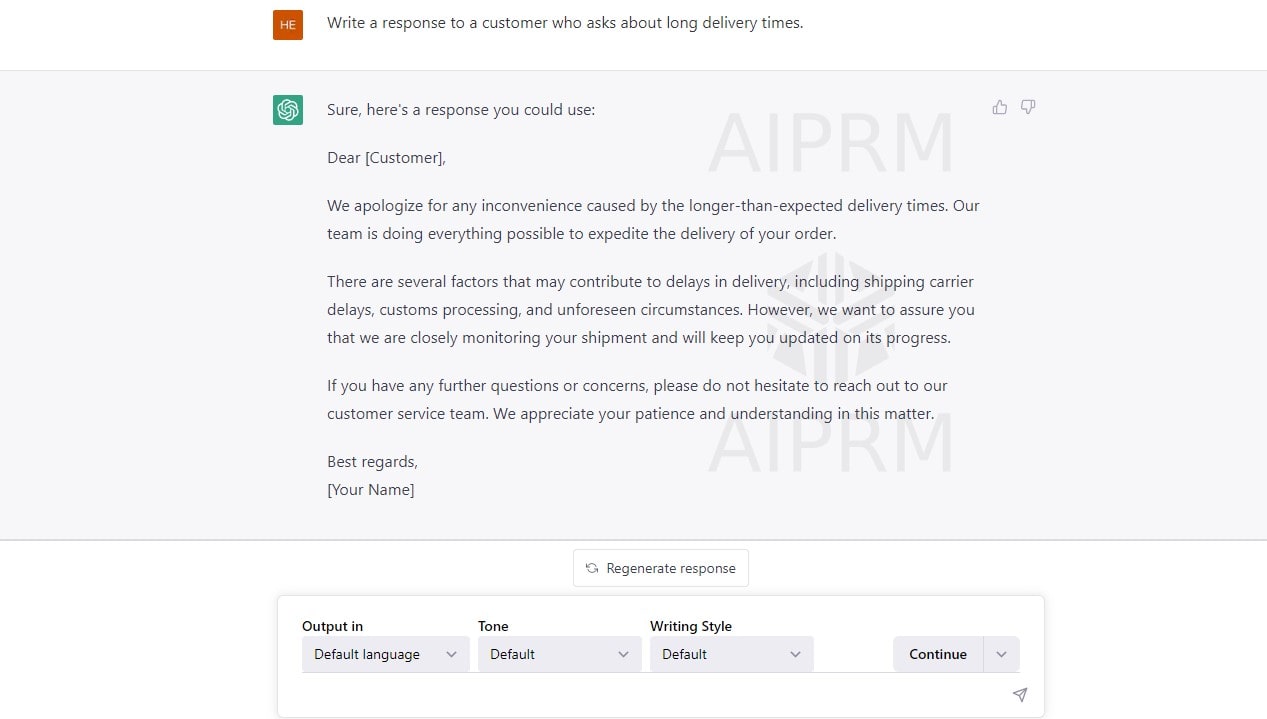
Any site that wants to keep ahead of the competition must negotiate the always shifting currents of SEO. Maintaining a current and visible state of your site depends on keeping on top of SEO trends in a constantly changing digital terrain.
Introduction to Future Trends in SEO
SEO changes with technology and user behavior; it is not fixed. Knowing future SEO trends will enable marketers and site owners to project changes and modify their activities. This conversation explores important developments probably influencing the SEO sector in the next years.
Emerging SEO Technologies
- Artificial Intelligence and Machine Learning: SERP content classification is altered by both. RankBrain, Google’s artificial intelligence system, greatly ranks search results depending on user activity. As artificial intelligence develops, users will find more relevant search results, which emphasizes the requirement of SEO techniques giving user interaction and content relevancy top priority.
- Siri, Alexa, and Google Assistant are helping voice search to flourish. This trend is moving toward longer, more conversational searches and calls for websites to maximize for voice search by including natural language and question-based content.
- Visual search capacity is being improved by developments in visual recognition technologies. Users of tools like Google Lens can search for everything they can view. This means that optimizing photos and other visual material for search will become more crucial and calls for SEO techniques include structural data to help visual discovery, high-quality image content, and image alt-text optimizations.
See Search Engine Watch’s materials for additional understanding of how artificial intelligence influences SEO.
Adapting to SEO Trends
- Already here is mobile-first indexing: Google mostly ranks and indexes a site using its mobile version. Ensuring your site is completely responsive and mobile-friendly is absolutely critical as mobile use increases.
- Emphasizing User Experience (UX), Google’s latest changes make clear that rankings depend critically on user experience. SEO methods will rely more on elements including site speed, simplicity of use, interactive and interesting content. Maintaining visitors on your website longer and lowering bounce rates depend on maximizing for a better user experience.
- SEO activities: As consumers become more environmentally concerned and show a dedication to sustainable activities, ranking consideration may change. Sites that support environmental responsibility and sustainability could start to get favoritism from search engines and users both.
As technology develops and user tastes change, SEO’s future seems to be quite different. Keeping up with these trends and modifying your plans will help you to make sure your website survives and reflects the changes. Accepting these changing SEO trends will increase site visibility, raise user involvement, and propel success in a digital environment growing in competitiveness.
Following these trends and always improving will enable your SEO to satisfy consumer expectations and industry requirements. These are some more ideas to take into account while you decide how SEO on your website will be developed going forward:
- Leveraging Data Insights: In SEO, data is starting to take front stage. Tracking user activity and site performance with analytics helps one to get insights that guide better optimizations. Advanced capabilities of tools like Google Analytics and SEMrush let you grasp the subtleties of traffic patterns and user involvement, so guiding your SEO campaigns depending on real facts.
- Integrating with Social Media: Although social media signals might not directly influence SEO results, including your SEO approach with social media will help to increase content reach and link-building By increasing organic search traffic and possible backlinks from other websites who notice your content, social sharing can drive traffic back to your site and raise brand visibility, therefore indirectly improving your SEO.
- Preparing for SERP Changes: SERPs fluctuate often. Features altering search results include local search upgrades, knowledge panels, and featured snippets. By improving your material to show in these features, you may keep ahead of these changes and raise click-through rates. Direct responses to often asked questions can improve highlighted snippets structurally.
- Ethical SEO: Ethical, white-hat SEO techniques that respect search engine guidelines are crucial as search engines grow stronger at spotting manipulative SEO techniques. Steer clear of short corners and concentrate on really giving consumers value. Giving ethical procedures top priority guarantees sustainability and long-term success for your SEO projects.
At last, SEO has to pay constant learning top priority. The terrain is always shifting, thus it’s important to keep educated by reliable SEO news sources, online courses, and industry blogs. Attending webinars and conferences or joining groups like Moz’s community will help you stay current with the newest SEO trends and methods.
Making ensuring your website stays competitive and compliant with search engine optimization best practices requires constant plan adaptation and preparation for these trends. Celebrate the developments in SEO and promise yourself to keep learning and growing.
SEO and User Experience (UX) Integration

SEO improvement for your website is like tuning a piano; both technical and aesthetic harmony is needed. Beyond simple functionality, integrating SEO with User Experience (UX) seeks to provide a flawless and interesting journey for users, thereby ensuring that every interaction on the site takes them closer to their goals and improves the visibility of your site in search engine results.
Though both seek to meet consumers’ needs and intentions, SEO and UX are entwined in their objectives. Google gives sites with high user engagement measures—low bounce rates and long dwell times resulting from an excellent user experience top priority. Improving UX makes users happy and indicates to search engines your website is valuable. This improves SEO.
Key Elements to Focus On:
- Site speed: Users want quickly loading pages. Reducing bounce rates and raising user happiness by improving site speed signals search engines in both favorable ways.
- Given most web traffic originates from mobile devices, your site needs to be mobile-friendly for UX and SEO.
- Well-organized sites enable visitors to easily and fast locate information, therefore lowering frustration and enhancing the whole experience.
Integrating SEO and UX:
- Apply simple, understandable design ideas to let the visitor organically traverse your website.
- Make sure material is best for keywords, reading comprehension, and interaction.
- Use responsive design to suit several screen sizes.
For further ideas on integrating these vital elements, resources such Nielsen Norman Group’s UX articles provide valuable guidelines and best practices. By marrying SEO and UX, you not only satisfy search engines but, more importantly, provide value to users, so improving conversion rates and, finally, search rankings.
Including SEO with a great user experience is not only helpful but also necessary in the current digital terrain. Websites that shine in both domains get more traffic, improved conversion rates, and stronger SEO results. Remember as you improve your site that the best SEO approach centers user experience at the core of design and development choices. Our approach provides customers with a great and unforgettable experience and satisfies search engine technical criteria.
Content Strategy for SEO
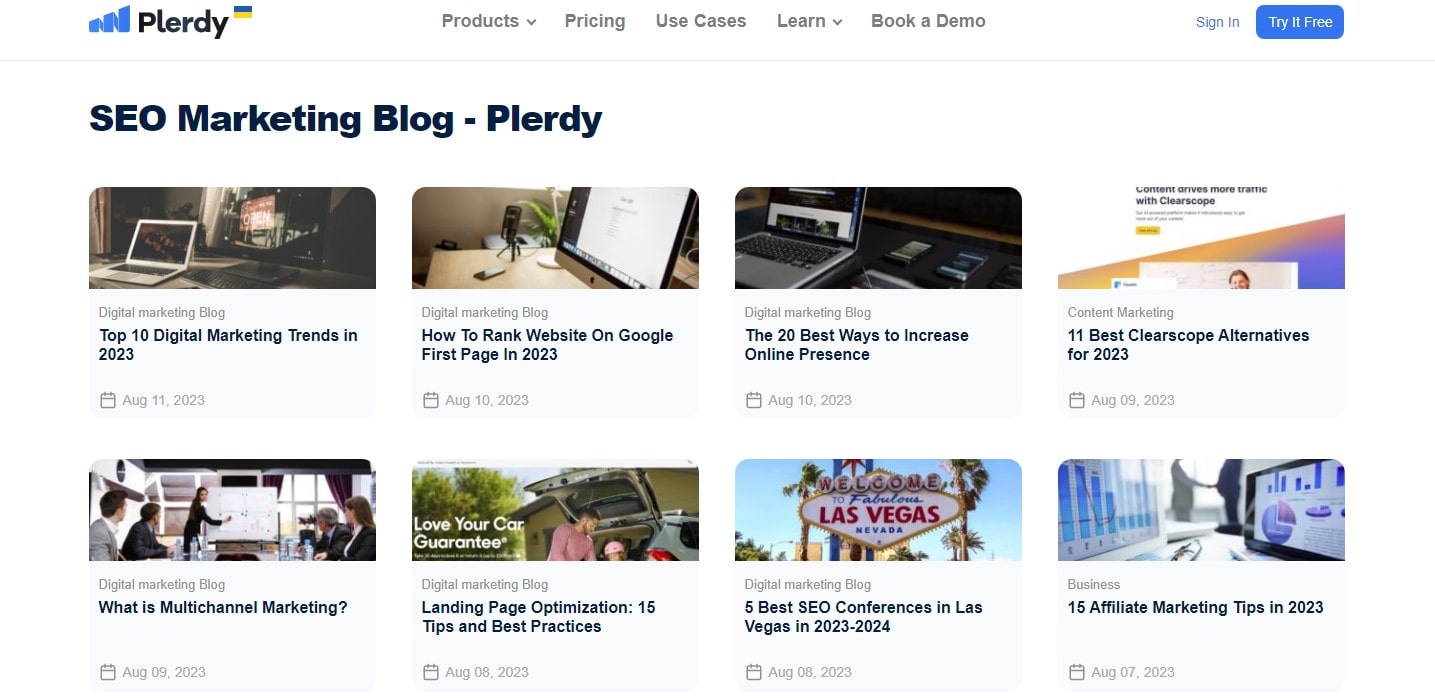
Improving the SEO of your site depends critically on a strong content strategy. It guarantees that you are creating material that interacts and converts rather than merely dumping words onto a website.
Good SEO calls for a content plan that satisfies search engine requirements and user needs rather than only keyword stuffing. You have to know your target, find their keywords, and address their problems and challenges if you want to maximize material for SEO.
Developing a Content Strategy:
- Research your audience; know their interests, pain issues, and concerns.
- Research keywords pertinent to the interests and commercial goals of your audience.
- Plan a variety of materials, from educational blog entries to interesting movies and infographics, that fit several phases of the user experience.
Whether your audience signs up for a newsletter, purchases something, or otherwise, every piece of material should assist them to convert.
Ahrefs and Google Keyword Planner can assist you identify highly valuable keywords for your material. The guide from HubSpot provides a whole picture for further ideas on developing a content strategy.
Every page on your website will draw visitors, interaction, and conversions thanks to a well-considered SEO content plan. By enhancing relevance and authority, content that fits audience needs and search trends improves SEO. Engagement of the audience and brand development depend on the quality and relevancy of the materials.
Local SEO Enhancement
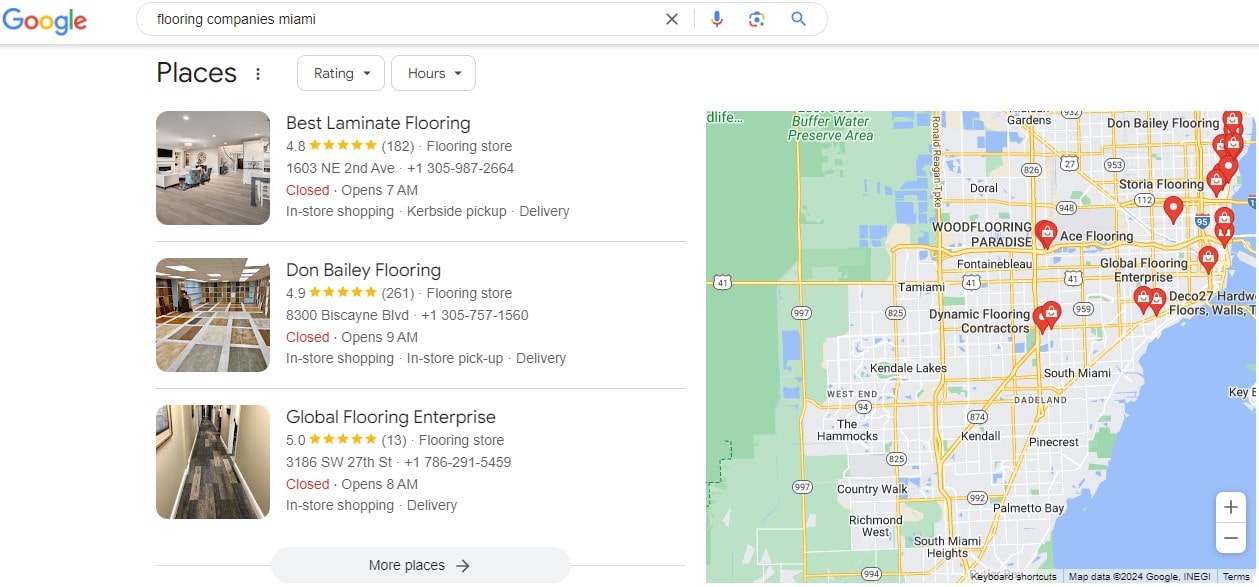
Improving the local search results on your website will help you identify your digital territory. Optimizing your website for local SEO is a game-changer for companies aiming for local clients that helps you to bring your offerings right to their homes.
Regional companies depend critically on local SEO. Your site shows more clearly in SERPs for users in your neighborhood when it is optimized for local search, therefore boosting foot traffic and local interaction.
Key Strategies for Enhancing Local SEO:
- Claim and confirm your Google My Business (GMB) listing here. Check your business name, address, phone number, and hours are accurate. Keep your GMB profile current with images and material to draw in business.
- Local Keywords: Add geo-specific keywords—that is, the location or area where your company conducts business—into the material on your site. These should show up in your titles, meta descriptions, and all around the material on your website.
- To get backlinks, network with nearby businesses and websites. These links improve the local relevance and power of your site.
- Ask pleased customers to write favorable reviews on Yelp and GMB. Reacting to positive and negative reviews suggests client involvement.
These strategies will increase your local search results and create a devoted following. Resources like Moz’s Local SEO Guide provide thorough understanding and useful advice for more specific local SEO direction.
Any company trying to dominate their local market has to first maximize for local SEO. Emphasizing particular local SEO techniques will help you make sure your site becomes the preferred source for local clients. Good local SEO increases web presence and generates natural traffic to your website, so improving general engagement and conversion rates. Local SEO seeks to link your company to surrounding searchers seeking your goods or services.
Advanced Link Building Strategies
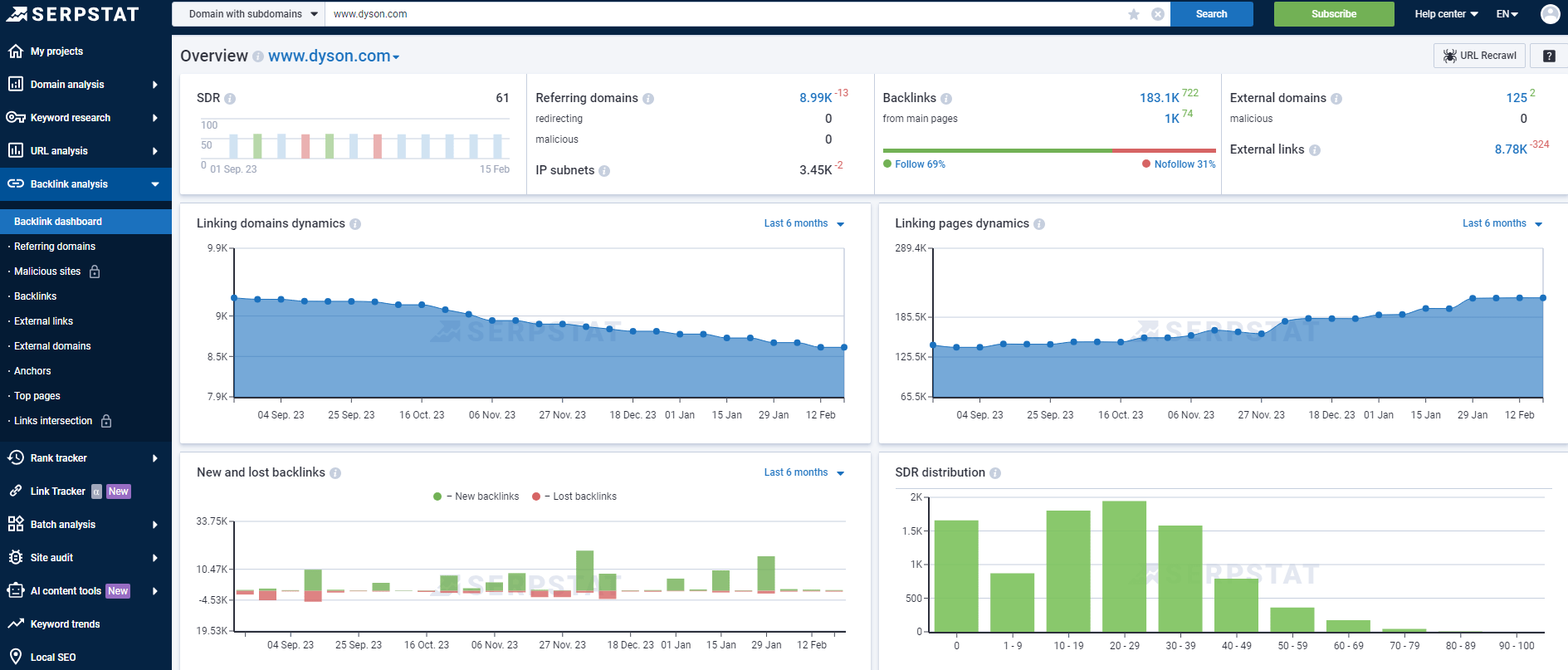
Entering the realm of link building without a plan is like sailing without a compass; you need direction to get at your goal. Improving the authority and visibility of your site will increase its SEO, hence advanced link building techniques are absolutely vital.
Beyond simple exchanges, advanced link building uses clever strategies that result in notable SEO enhancement:
- Create excellent, educational material that inherently draws backlinks. Examples are original research, thorough guides, and infographics offering content other sites will share and link to.
- Guest Blogging: Share excellent pieces by identifying influential blogs in your field of business. This approach helps you get backlinks and establishes you as a subject-matter expert, therefore strengthening the reputation of your brand.
- Ahrefs and other technologies let you discover broken links on pertinent websites. Send a replacement link to the site owners including material on your website that offers comparable value. This approach lets site owners obtain backlinks and resolve bothersome dead links.
- Create thorough industry-specific resource lists or tutorials based on your business model. High-quality backlinks can come from outreach to sites you name as resources or those might benefit from your list inclusion.
- Digital PR: Get backlinks from online, magazine, and newspaper publications using public relations techniques. Create gripping narratives about your company or market that news agencies would be interested in covering, which would naturally create backlinks from reputable sources.
The Moz website’s advanced link building guide offers deeper insights and useful examples for anyone eager to investigate these techniques more closely.
These cutting-edge link building techniques will help your website acquire premium backlinks that greatly increase your SEO initiatives. The aim is to create links that raise the search engine rating of your website, increase pertinent traffic, and strengthen the online power of your brand. Link building calls for plan, creativity, and time.
Finally
SEO transforms your site from a secret to a lighthouse for your visitors. Our strategies are your road map in the convoluted realm of SEO. By giving user experience first priority, applying contemporary link-building techniques, and monitoring trends, your site could compete and lead in the digital economy.
Intrigued about delving further into the field of digital media? Discover additional ideas and professional techniques on Plerdy’s blog, where the path to become masters of SEO keeps on. Every piece helps you to make your website a powerhouse of visitor interaction and conversion. eager to improve the possibilities of your site Visit Plerdy’s blog now to turn your digital plan into a dynamic force. Look further on Plerdy.
Your path through SEO will be as fulfilling as it is enlightening if you use these lessons and always improve your strategy.

